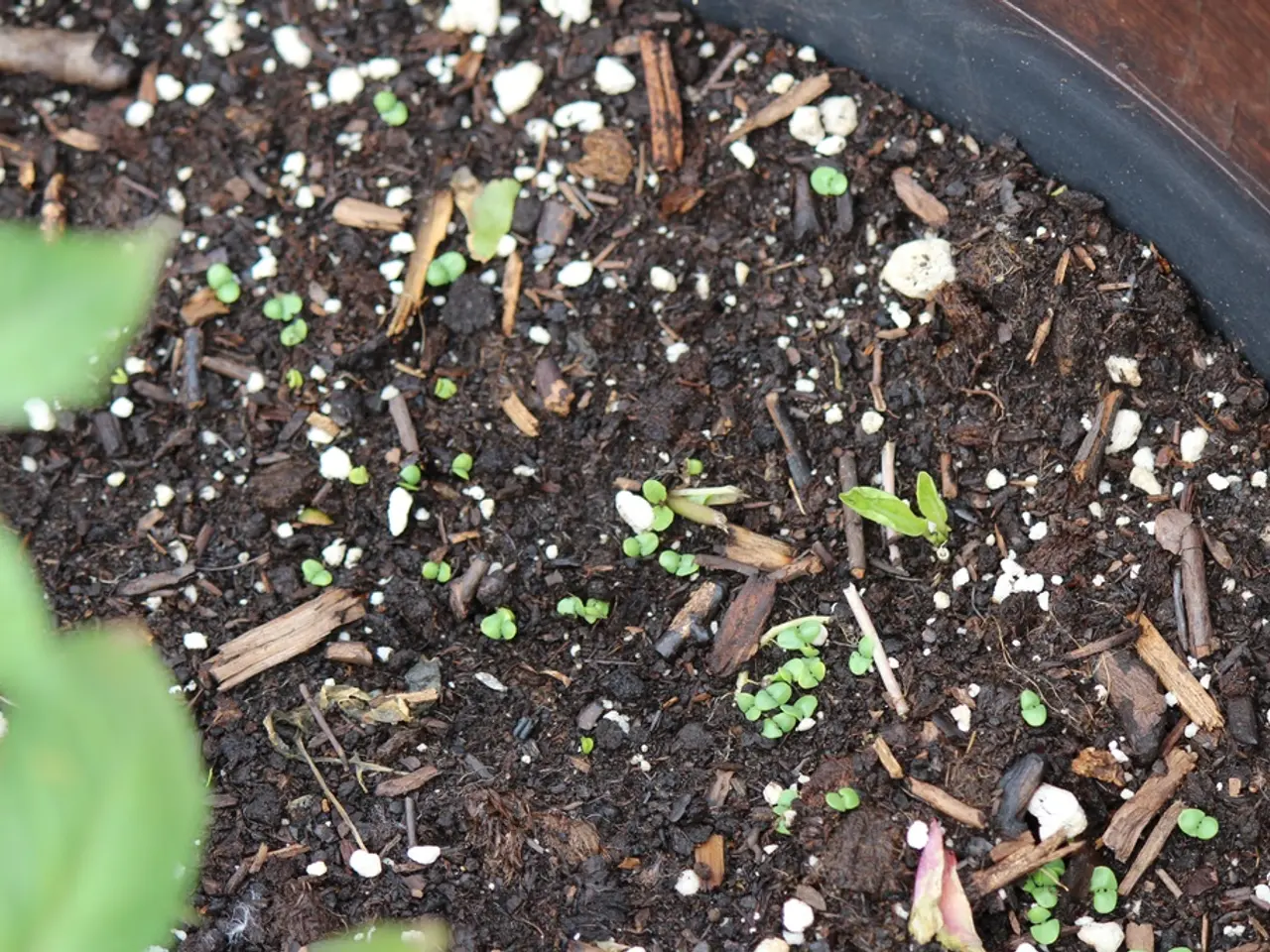Essential Nutrient Uptake by Plants: How They Absorb Nourishment from the Soil
In the world of gardening, understanding the intricacies of soil composition and the essential nutrients plants need is key to nurturing a thriving garden. Let's delve into the fascinating world of soil and plant nutrition.
Soil, the foundation of any garden, plays a crucial role in plant growth. Its composition and texture significantly influence the acquisition of water, ions, and minerals by plants. Two common types of soil are sandy and clay.
Sandy soil, made up of many irregular to rounded tiny grains of sand, is well-drained due to the ample air space between the particles. This type of soil tends to warm up a little faster in the spring compared to clay soil. However, sandy soils are droughty, have a very low available water capacity, and are prone to leaching and erosion. Transplanted plants seem to establish a little bit faster in sandy soils as their roots can get a foothold more easily in the looser soil.
On the other hand, clay soils have smaller particle sizes that hold water and nutrients tightly, resulting in a higher water and nutrient-holding capacity but slower drainage. The lack of oxygen in clay soil can impact the root structure, making it difficult for plant roots to grow and adopt odd patterns or be abnormally short. To improve the drainage in clay soil, organic matter such as compost, manure, or shredded leaves can be added, as well as gypsum or lime to make the soil more friable.
Plants require 17 essential nutrients to grow and survive, divided into macronutrients and micronutrients. Each has specific roles crucial for plant growth, development, and survival.
Macronutrients, needed in larger amounts, largely support structural components, energy-related molecules, and water/nutrient transport. These include nitrogen, phosphorus, potassium, calcium, magnesium, and sulfur. Nitrogen is a building block for growing new stems and leaves, a necessary part of chlorophyll, and helps plants photosynthesize. Phosphorus is needed for developing flowers, fruits, and root systems, is critical for energy transfer, and promotes root growth. Potassium regulates water balance, maintains cell turgor, activates enzymes, and facilitates nutrient transport. Calcium is crucial for cell wall structure, membrane stability, and signaling within cells. Magnesium is central to the chlorophyll molecule and involved in enzyme activation and energy transfer. Sulfur is a key constituent of some amino acids and vitamins, important for protein synthesis and enzyme function.
Micronutrients, needed in trace amounts, primarily serve as cofactors for enzymes and are critical in physiological and metabolic processes that sustain growth and stress resilience. These include iron, boron, manganese, zinc, copper, molybdenum, nickel, and chloride. Iron facilitates chlorophyll synthesis and acts in electron transport chains during photosynthesis and respiration. Boron is essential for cell wall formation, sugar transport, root growth, and hormone regulation. Manganese is required for photosynthesis by activating enzymes and helping in oxygen evolution during splitting of water; also aids stress tolerance. Zinc is important in enzyme activation, protein synthesis, and regulation of plant growth hormones. Copper acts as a cofactor in photosynthesis, respiration, lignin synthesis for structural support, and enzyme activation. Molybdenum is needed for nitrogen fixation in legumes and for converting nitrates into usable forms within the plant. Nickel functions as a cofactor for the urease enzyme that converts urea into ammonia, playing a vital role in nitrogen metabolism. Chloride is involved in photosynthesis, osmotic regulation, maintaining water balance, and disease resistance.
By knowing the characteristics of the soil, gardeners can select plants that are well-suited to the specific soil type and make necessary amendments to improve water and nutrient availability for their plants. The ideal soil composition for plant growth is 50% pore space, 45% mineral matter, and 5% organic matter. Sandy soils have larger particle sizes, allowing water to drain quickly and struggling to retain sufficient water and nutrients for plants. Clay soil, while nutrient-rich and drought-resistant, has low permeability, leading to waterlogging and poor oxygen availability for plants.
In conclusion, understanding the essential nutrients plants need and the characteristics of different soil types is essential for gardeners to create and maintain a thriving garden. The most important plant nutrients are nitrogen, phosphorus, and potassium, but a balanced diet of all essential nutrients is crucial for optimal plant growth.
The understanding of soil composition is not limited to the field of gardening; it carries significance in the realms of science and health-and-wellness, as it impacts plant nutrition and by extension, human nutrition through the food grown in these gardens. Furthermore, the knowledge of essential nutrients like nitrogen, phosphorus, potassium, and other micronutrients, not just for plants, but also for fitness-and-exercise, through their role in enzyme activation and energy production, is of paramount importance in health-and-wellness.




